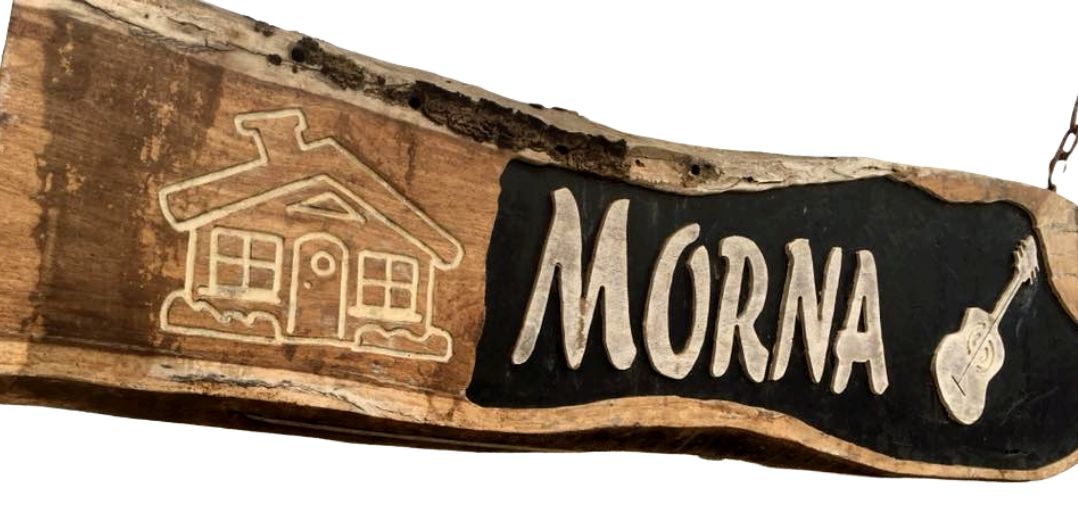Praia, 11 Dec 2019 (Lusa) – The Cape Verdean Prime Minister, Ulisses Correia e Silva, said today that the moment “much desired happened”, with the classification of the morna as Intangible Cultural Heritage of Humanity by UNESCO, which now represents increased responsibilities for Cape Verde.
“The expected and much-desired moment happened. Morna is, from today, a World Heritage Site”, said Ulisses Correia e Silva, surrounded by another two dozen musicians, composers, and instrumentalists who, in the Government Palace in Praia, followed through the Internet the proclamation of UNESCO, in Colombia.
Morna, a musical genre typical of Cape Verde, was proclaimed today as an Intangible Cultural Heritage of Humanity by the United Nations Educational, Scientific and Cultural Organization (UNESCO).
“It is a particularly happy day, on which we should all be happy to have been born Cape Verdeans,” said the head of the Government, after the announcement party and before an improvised concert of mornas in the Government Palace, with the artists.
The final decision on the ratification of the classification, which had already received the approval of the commission of experts in November, was taken today, during the 14th annual meeting of the Intergovernmental Committee for the Safeguarding of the Intangible Cultural Heritage of UNESCO, which has been held since Monday at the Centro de Congresos Agora, in Bogotá, Colombia.
The classification, recalled the Prime Minister, imposes on Cape Verde, from now on, “greater responsibilities”: “In preserving, safeguarding, valuing and promoting morna in Cape Verde, with our diaspora and the world.
He guaranteed, therefore, that “Cape Verde will comply with and honor with UNESCO the recognition of morna as a heritage of all humanity”.
Ulisses Correia e Silva assured that the State Budget for 2020 already has funds for “the beginning of the implementation of the safeguard plan that was approved in the whole dossier of this application” and that the Cultural Heritage Institute already has “enhanced” powers in the preservation process.
Popularly considered “queen music” of Cape Verde, the dossier of its application for the Intangible Cultural Heritage of UNESCO, with more than 1,000 pages and about 300 interviews, was formally delivered by the Cape Verdean Government on March 26, 2018.
Visibly moved, in a speech made a few minutes after the announcement of the proclamation by UNESCO, the Prime Minister thanked the support, in this candidacy, of the “friends of Cape Verde”, such as the Community of Portuguese Language Countries (CPLP) and the Economic Community of West African States (ECOWAS).
- Fadista Sara Correia Performs at 2023 Lowell Folk Festival
- An Evening of Fado with Maria Emília and Helder Moutinho in Lowell, MA
- Fado Museum, in Lisbon, inaugurates “Celeste” exhibition, a tribute to fado singer Celesta Rodrigues (1923-2018)
- INTERVIEW: “Ice Merchants” Producer Needs Funding for Final Step Toward the Oscars
- Portuguese communities in North America reject SATA’s “abusive” prices
But above all of the musicians, composers, and instrumentalists, of several generations, in the country and in the diaspora.
“They have made and make Cape Verde a privileged people for God, for their music, and for their warmth”, he said.
With this classification, he also exhorted the cultural and economic use of the decision: “Particularly tourism, which from now on will have the indelible mark of the most genuine expression of the Creole people with more than five and a half centuries of history: the warm”, he stressed.
For Ulisses Correia e Silva, the decision taken by UNESCO is also a “great opportunity for the business sector of national music”.
“New careers, new stages, new agendas open up with this new opportunity”, he pointed out.
The governor appealed: “Don’t let the folklore of our land die. Wherever you go, sing with veneration. Sing on departure, sing on return. Warm yesterday, today and forever.
According to the dossier of the candidacy, the morna appeared in the XIX century, not being consensual the origin of the name and island where it was born: Boa Vista or Brava.
Marked by the lyrics of the poet Eugénio Tavares (island of Brava, 1867 – 1930) and later by Francisco Xavier da Cruz or ‘B.Léza’ (island of São Vicente, 1905 – 1958), the morna met its greatest exponent outside Cape Verde through the singer César Évora (1941 – 2011), who through that musical genre opened the doors of the world to a country of just over half a million inhabitants.
The morna comes from a mixture of musical styles with strong African roots, the landum, with the influences of Luso-Brazilian fashion, recalls the candidacy dossier.
Artigo em Português
Morna património da humanidade é momento “muito desejado” e com responsabilidades
Praia, 11 dez 2019 (Lusa) – O primeiro-ministro cabo-verdiano, Ulisses Correia e Silva, afirmou hoje que o momento “muito desejado aconteceu”, com a classificação da morna como Património Imaterial Cultural da Humanidade pela UNESCO, o que representa agora acrescidas responsabilidades para Cabo Verde.
“O momento esperado e muito desejado aconteceu. A morna é, a partir de hoje, Património Imaterial da Humanidade”, afirmou Ulisses Correia e Silva, rodeado de mais duas dezenas de músicos, compositores e instrumentistas que, no Palácio do Governo, na Praia, acompanharam através da Internet a proclamação da UNESCO, na Colômbia.
A morna, género musical típico de Cabo Verde, foi proclamada hoje Património Imaterial Cultural da Humanidade pela Organização das Nações Unidas para a Educação, Ciência e Cultura (UNESCO, na sigla inglesa).
“É um dia particularmente feliz, em que nós todos devemos estar felizes de ter nascido cabo-verdianos”, afirmou o chefe do Governo, já depois da festa do anúncio e antes de um improvisado concerto de mornas no Palácio do Governo, com os artistas.
A decisão final sobre a ratificação da classificação, que já tinha recebido o aval da comissão de peritos em novembro, foi tomada hoje, durante a 14.ª reunião anual do Comité Intergovernamental para a Salvaguarda do Património Cultural Imaterial da UNESCO, que decorre desde segunda-feira no Centro de Congressos Agora, em Bogotá, Colômbia.
A classificação, recordou o primeiro-ministro, impõe a Cabo Verde, a partir de agora, “maiores responsabilidades”: “Na preservação, na salvaguarda, na valorização e promoção da morna em Cabo Verde, junto da nossa diáspora e no mundo”.
Garantiu, por isso, que “Cabo Verde irá cumprir e honrar com a UNESCO o reconhecimento da morna como património de toda a humanidade”.
Ulisses Correia e Silva assegurou que o Orçamento do Estado para 2020 já conta com verbas para “o início da implementação do plano de salvaguarda que foi aprovado no conjunto do dossiê desta candidatura” e que o Instituto do Património Cultural já tem competências “reforçadas” no processo de preservação.
Considerada popularmente “música rainha” de Cabo Verde, o dossiê da sua candidatura a Património Imaterial Cultural da UNESCO, com mais de 1.000 páginas e cerca de 300 entrevistas, foi formalmente entregue pelo Governo cabo-verdiano em 26 de março de 2018.
Visivelmente emocionado, numa intervenção feita pouco minutos do anúncio da proclamação pela UNESCO, o primeiro-ministro agradeceu o apoio, nesta candidatura, dos “amigos de Cabo Verde”, como a Comunidade dos Países de Língua Portuguesa (CPLP) e a Comunidade Económica dos Estados da África Ocidental (CEDEAO).
- Fadista Sara Correia Performs at 2023 Lowell Folk Festival
- An Evening of Fado with Maria Emília and Helder Moutinho in Lowell, MA
- Fado Museum, in Lisbon, inaugurates “Celeste” exhibition, a tribute to fado singer Celesta Rodrigues (1923-2018)
- INTERVIEW: “Ice Merchants” Producer Needs Funding for Final Step Toward the Oscars
- Portuguese communities in North America reject SATA’s “abusive” prices
Mas sobretudo dos músicos, compositores e instrumentistas, das várias gerações, no país e na diáspora.
“Fizeram e fazem com que o cabo-verdiano seja um povo privilegiado por Deus, pela sua música e pela sua morna”, afirmou.
Com esta classificação, exortou ainda ao aproveitamento cultural e económico da decisão: “Particularmente o turismo, que passará a partir de hoje a ter a marca indelével da expressão mais genuína deste povo crioulo com mais de cinco séculos e meio de história: a morna”, sublinhou.
Para Ulisses Correia e Silva, a decisão tomada pela UNESCO é também uma “grande oportunidade para o setor empresarial da música nacional”.
“Novas carreiras, novos palcos, novas agendas se abrem com esta nova oportunidade”, apontou.
O governante apelou: “Não deixem morrer o folclore da nossa terra. Por onde vocês forem cantem com veneração. Cantem na partida, cantem no regresso. Morna ontem, hoje e sempre”.
De acordo com o dossiê da candidatura, a morna terá surgido no século XIX, não sendo consensual a origem do nome e ilha onde nasceu: Boa Vista ou Brava.
Marcada pelas letras do poeta Eugénio Tavares (ilha da Brava, 1867 – 1930) e mais de tarde de Francisco Xavier da Cruz ou ‘B.Léza’ (ilha de São Vicente, 1905 – 1958), a morna conheceu o seu expoente maior fora de Cabo Verde através da cantora César Évora (1941 – 2011), que através daquele género musical abriu as portas do mundo a um país de pouco mais de meio milhão de habitantes.
A morna surge de uma mistura de estilos musicais com fortes raízes africanas, o landum, com as influências da modinha luso-brasileira, recorda o dossiê de candidatura.


